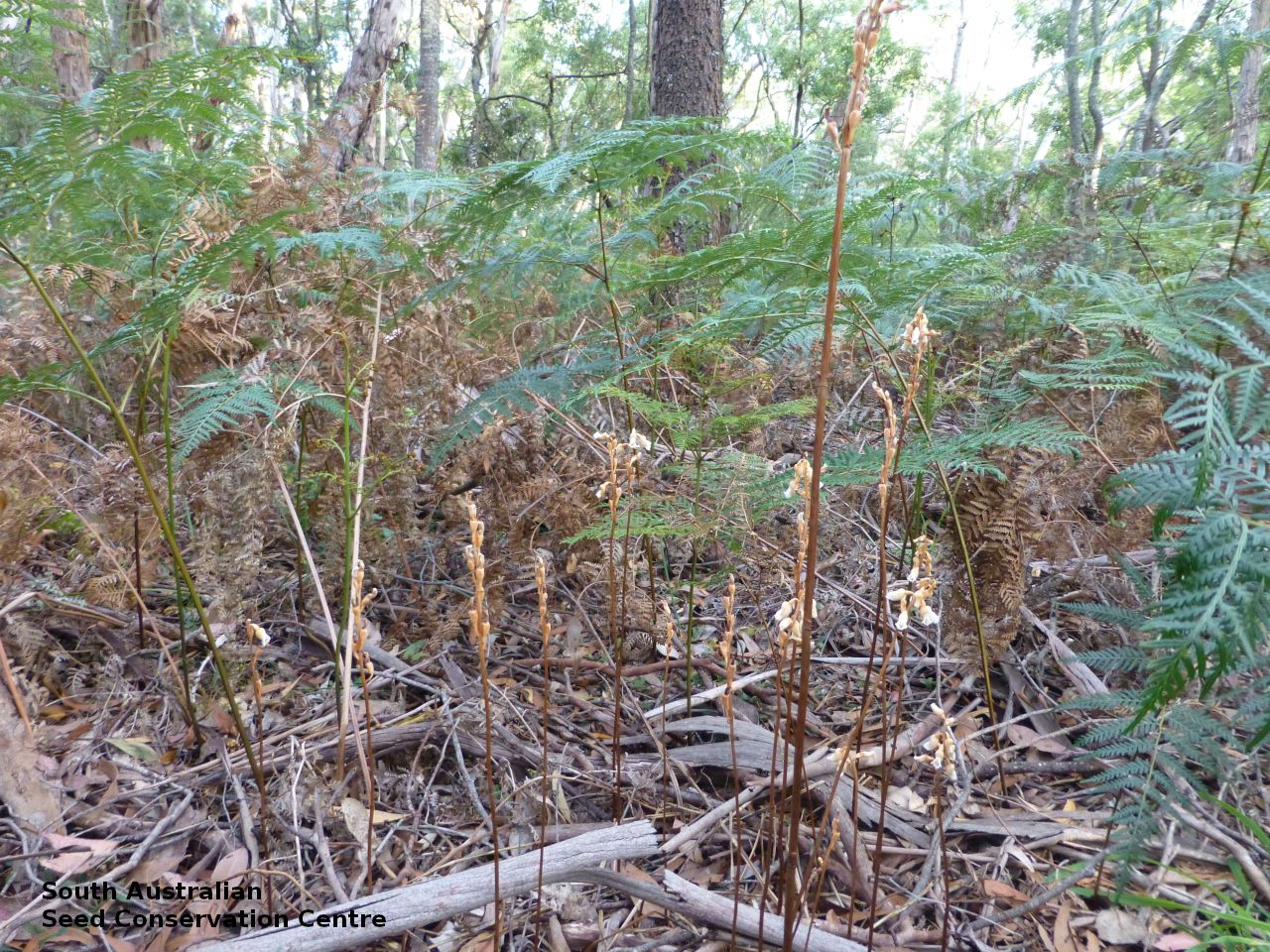
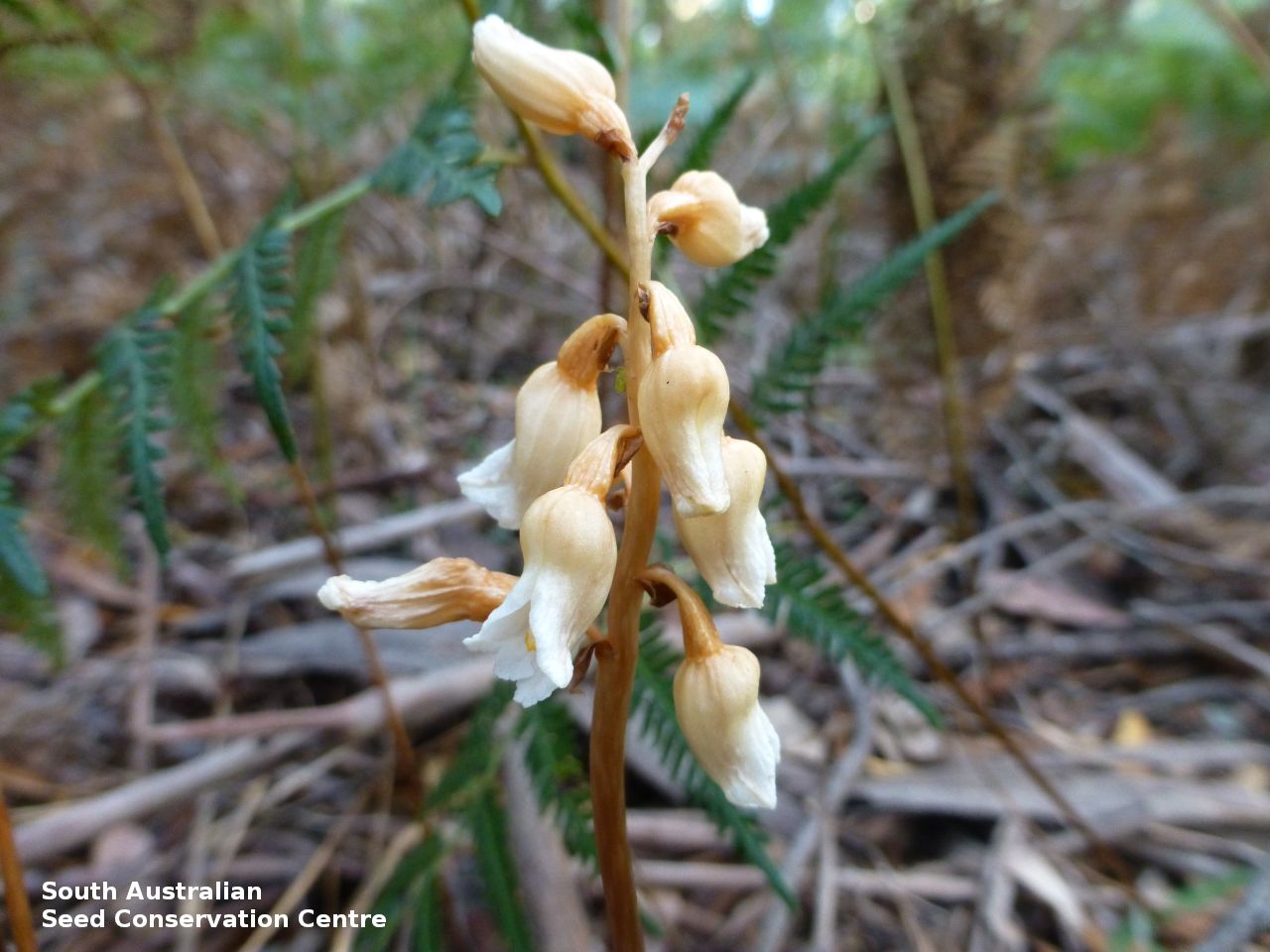
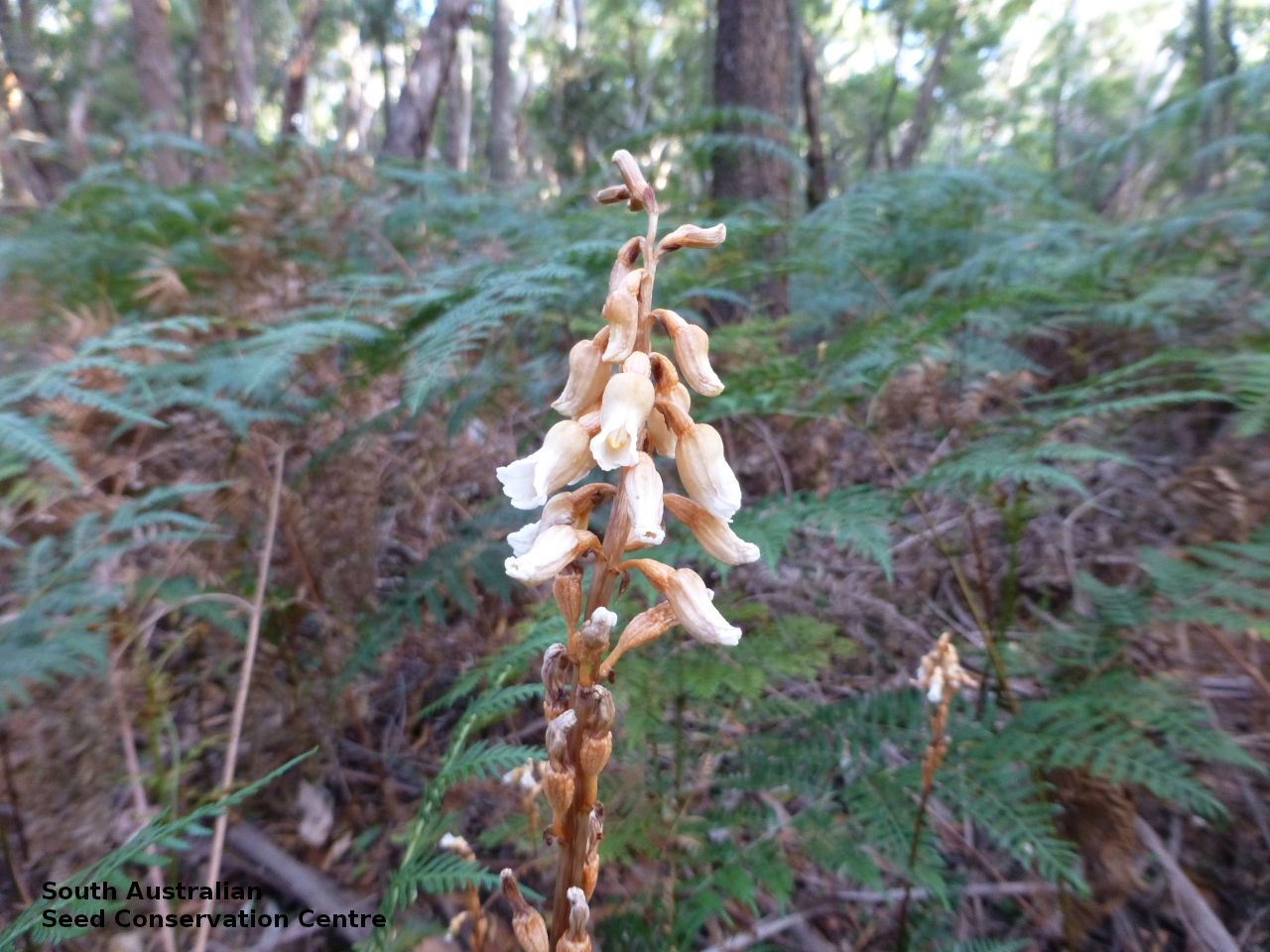
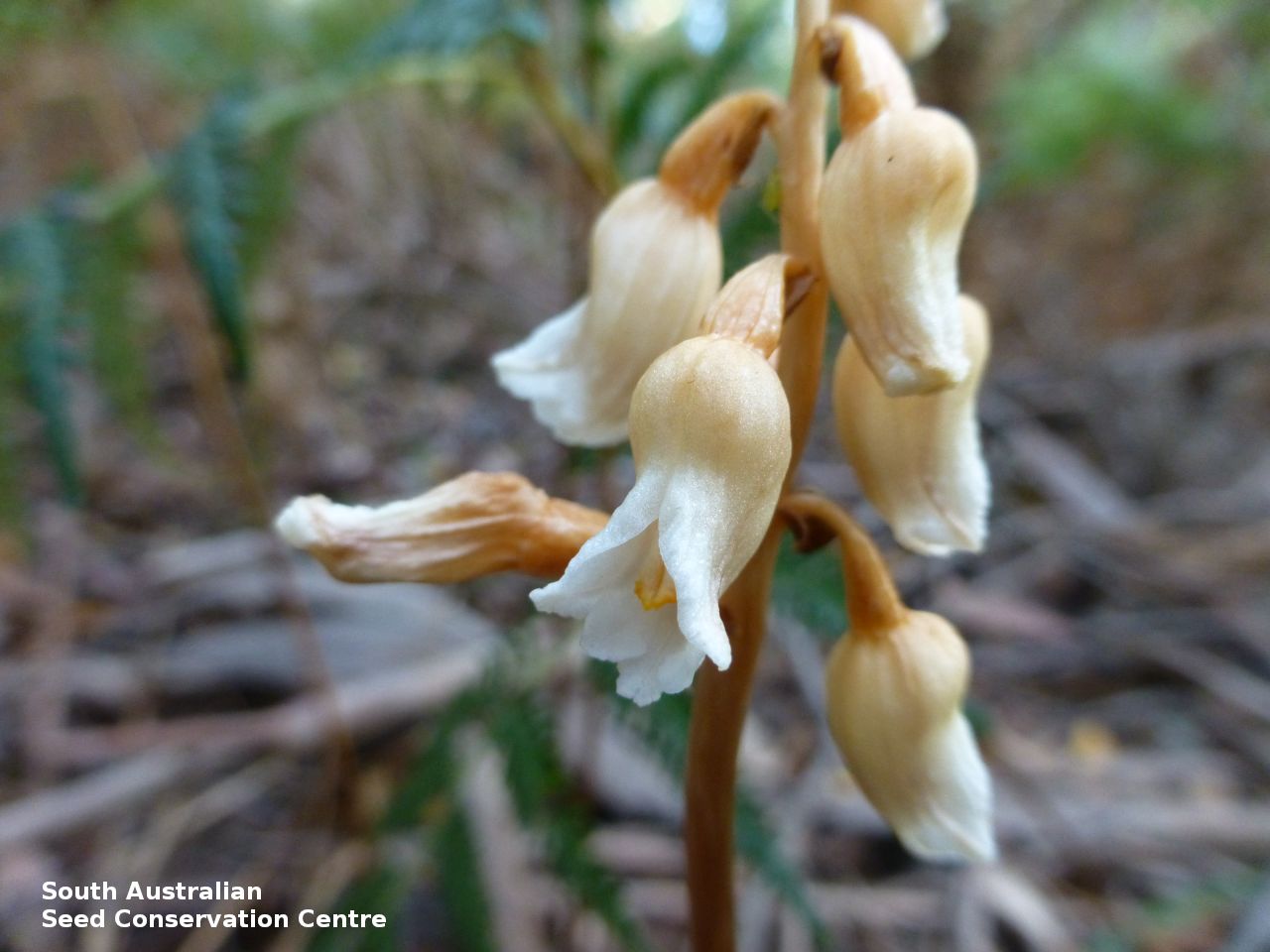
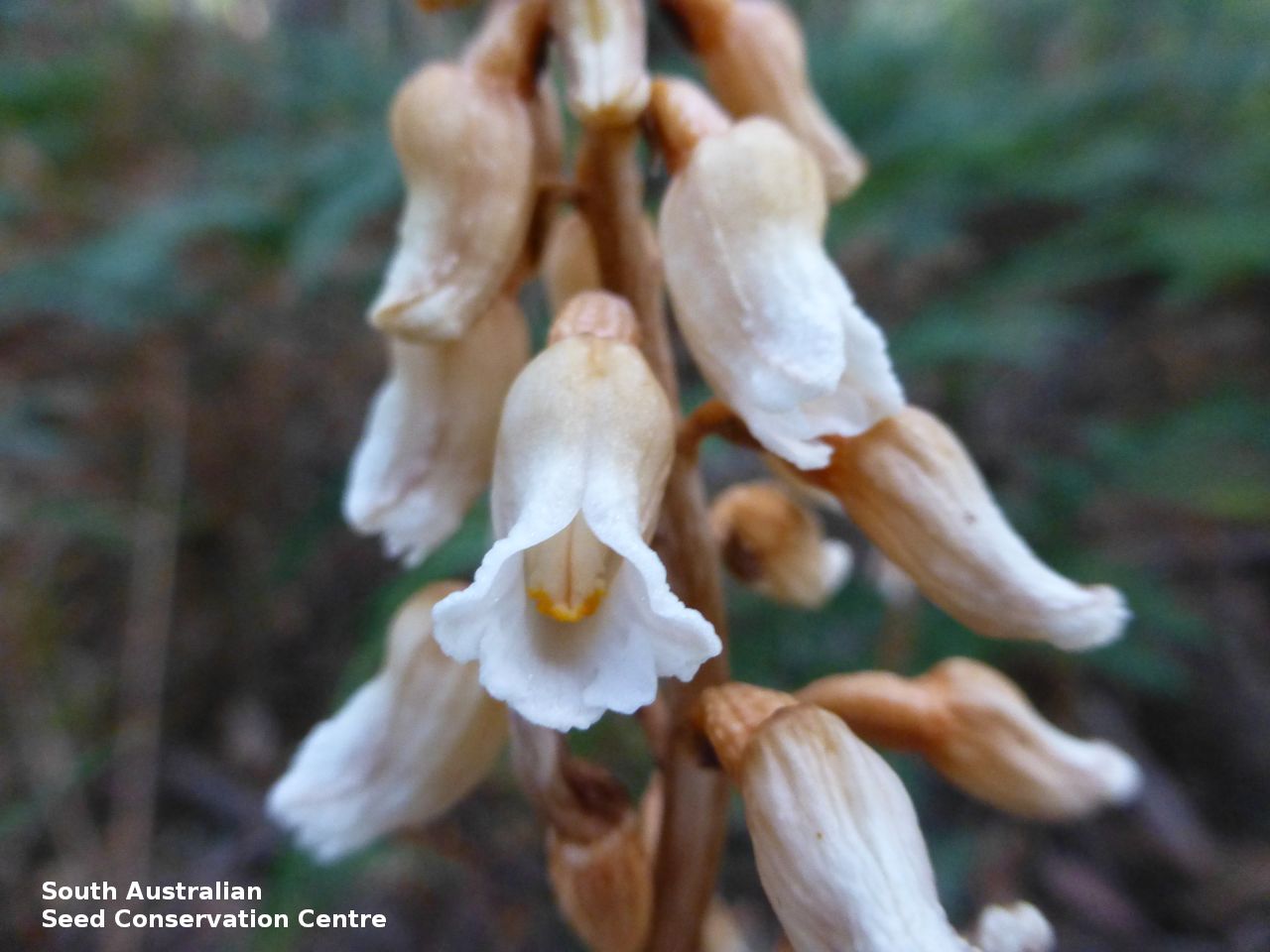
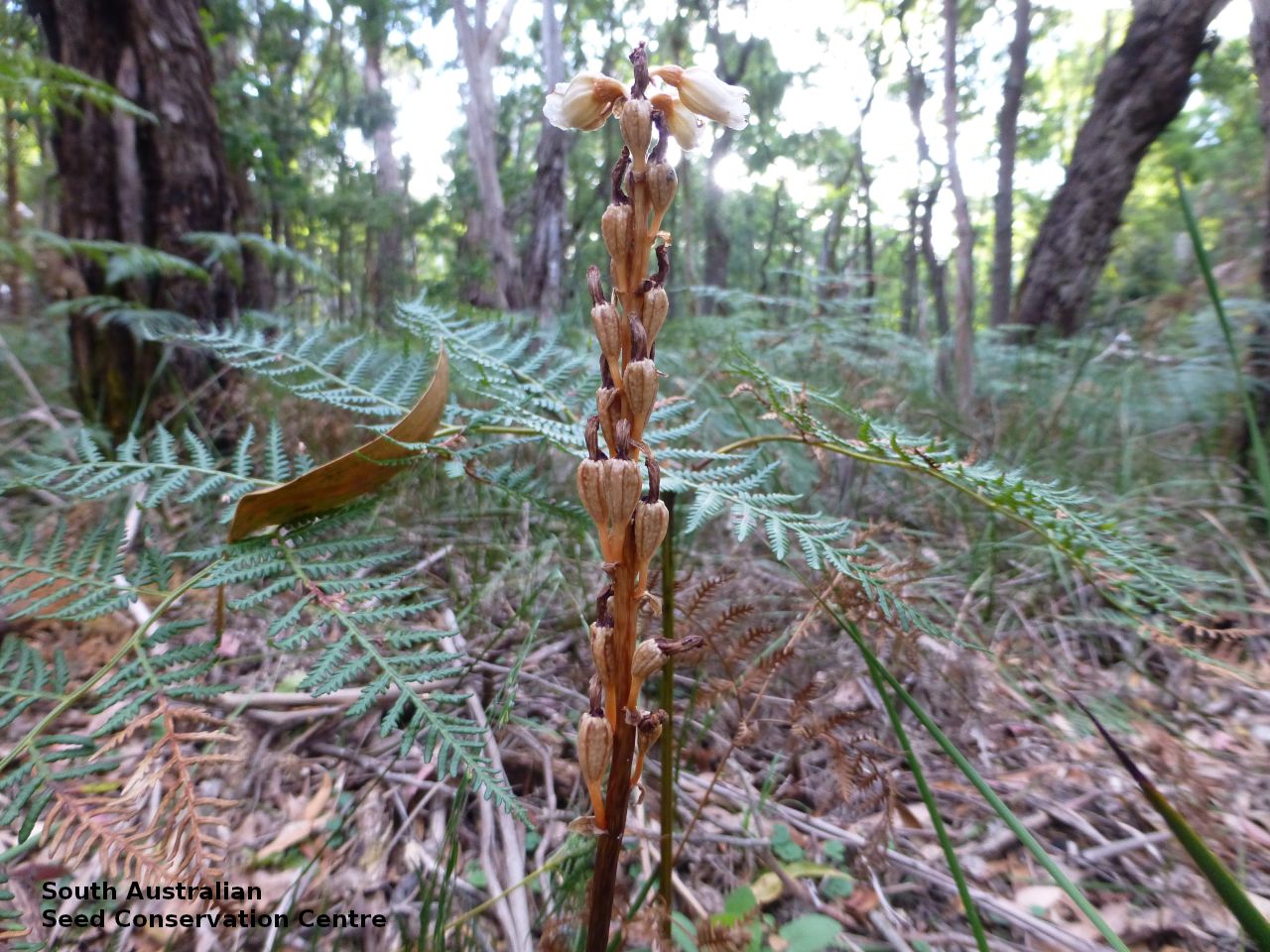
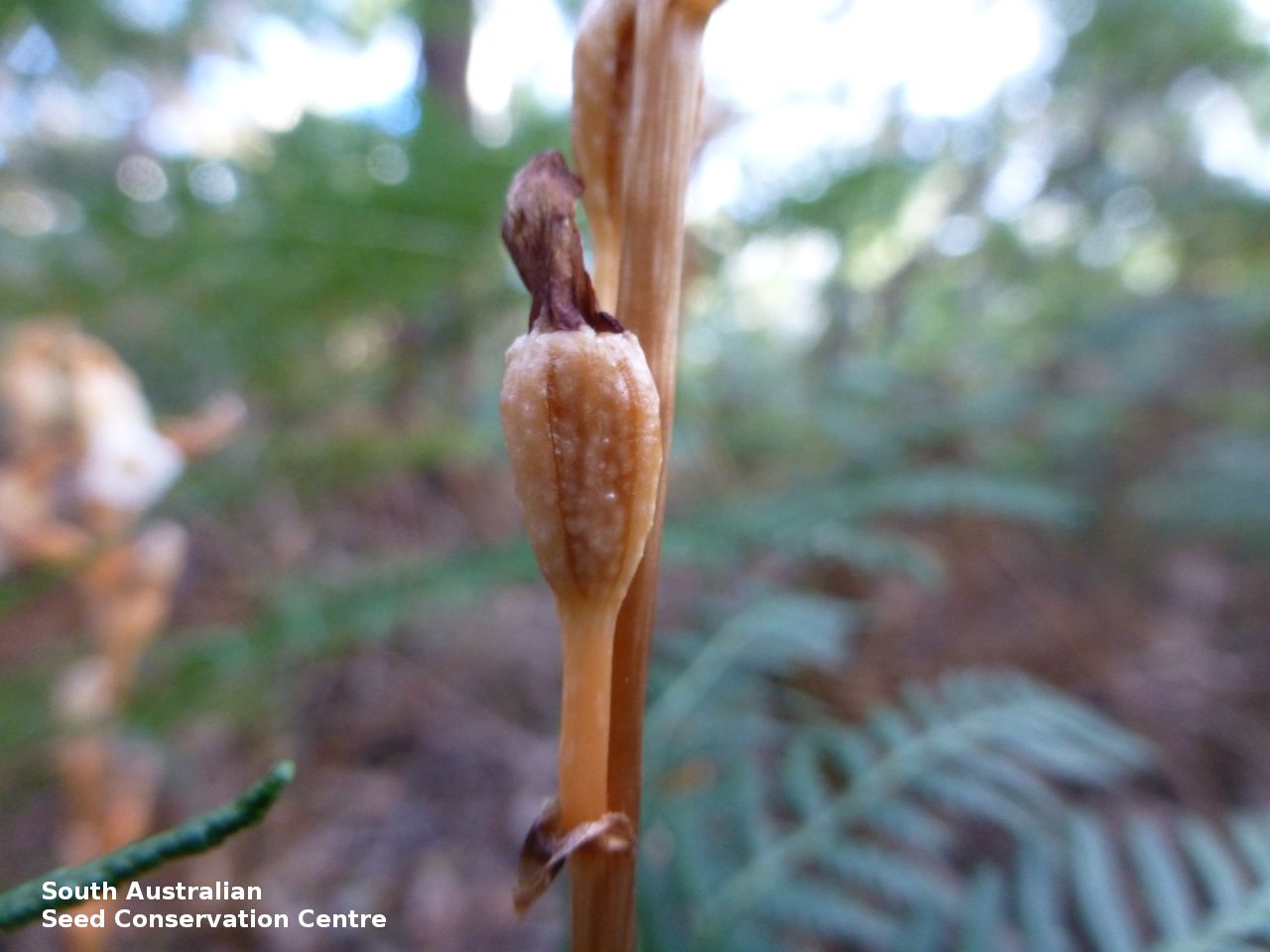
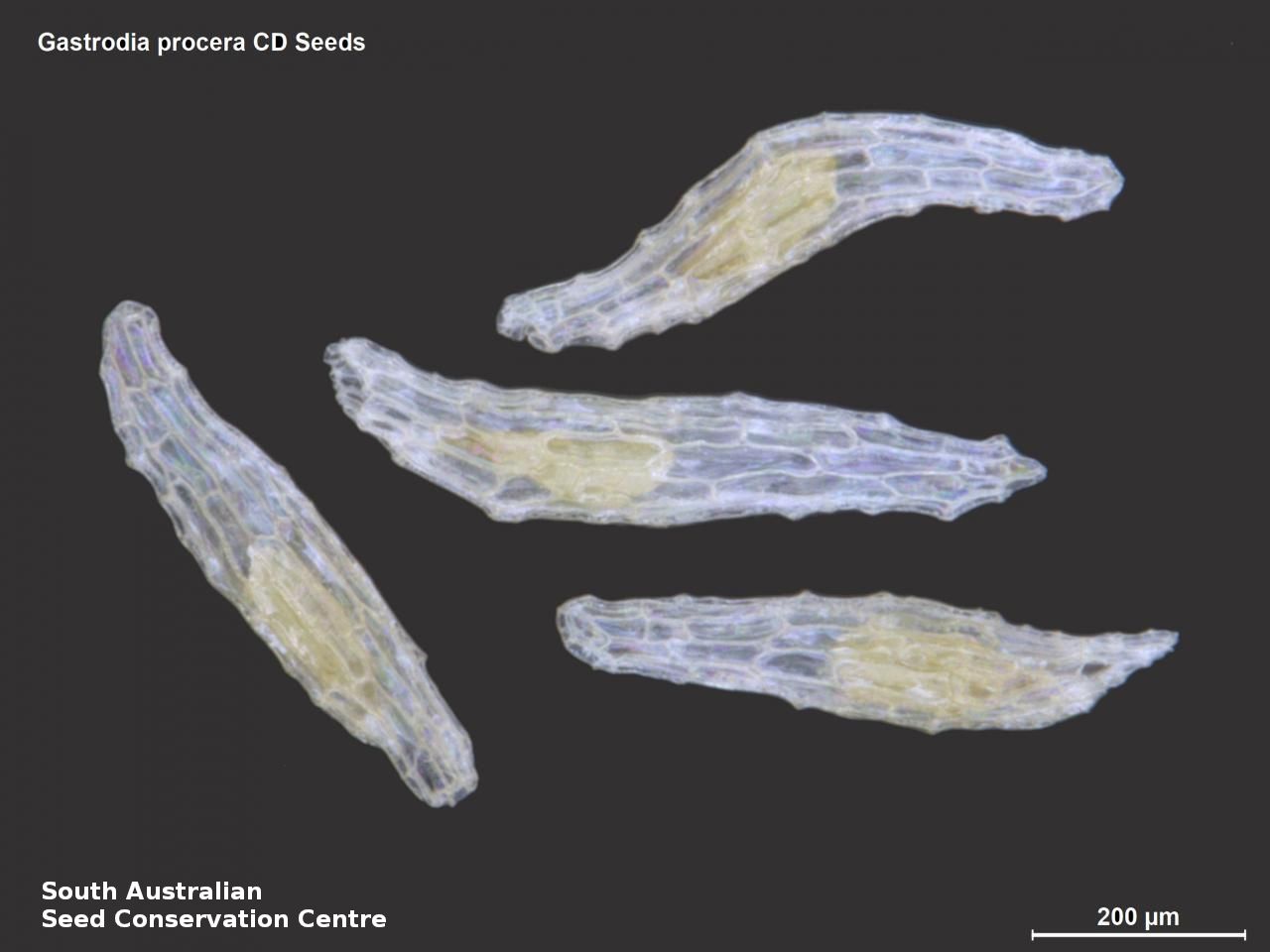
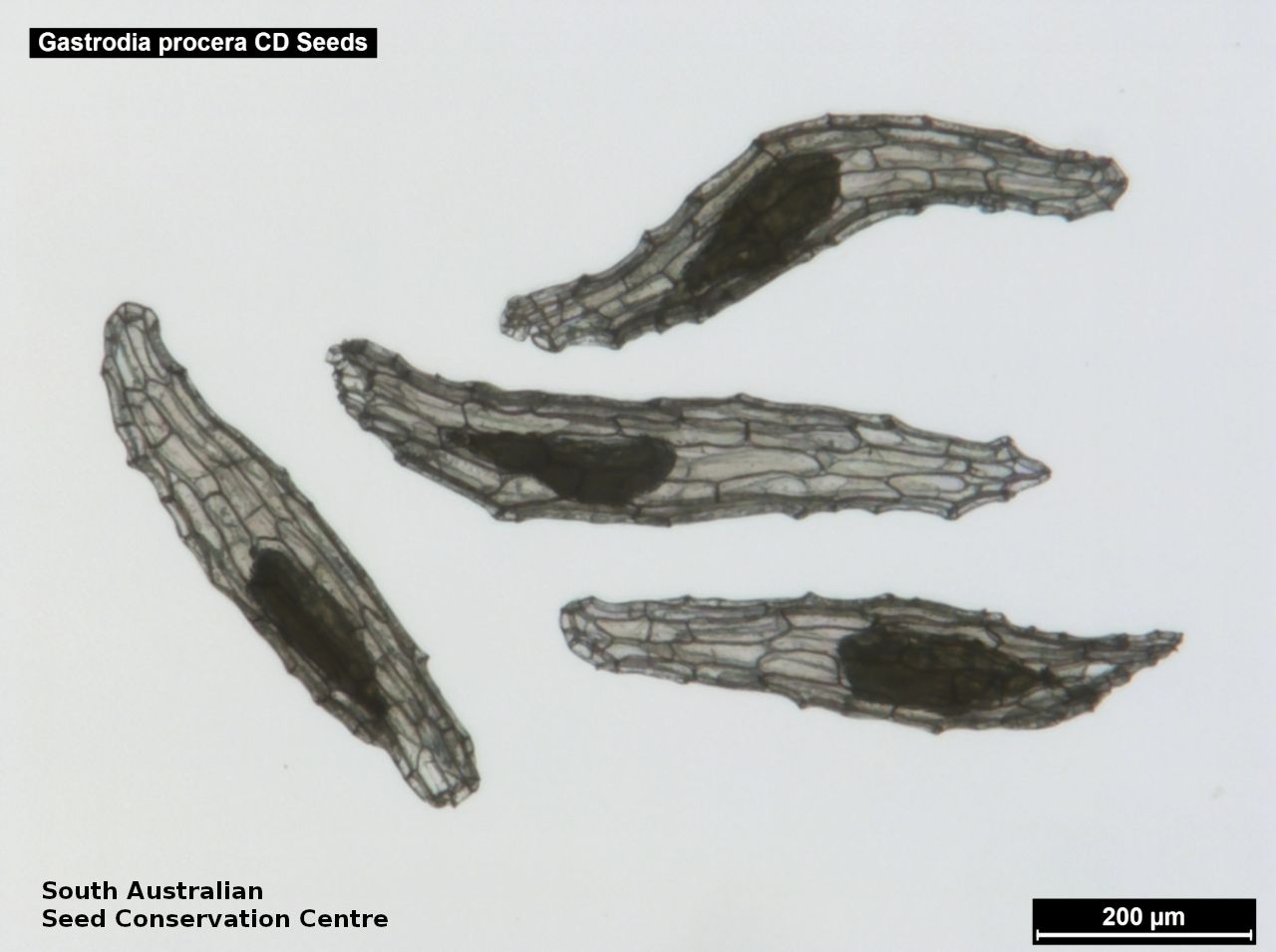


Botanical art
Etymology
Gastrodia from the Greek 'gastrodes' meaning pot-bellied, referring to the swollen, sometimes bulbous flower. Procera from the Latin 'procerus' meaning high or tall, referring to the tall, erect flower spike.
Distribution and status
Found near Mount Gambier in South Australia, growing in areas of high rainfall in wet sclerophyll forests, dry sclerophyll forests, woodlands and riparian areas. Also found in New South Wales, Victoria and Tasmania. Native. Very rare in South Australia. Common in the other states.
Herbarium region: South Eastern
NRM region: South East
AVH map: SA distribution map (external link)
Plant description
Annual terrestrial orchid growing to 120 cm tall with up to 70 crowded flowers. These epiparasitic herb are leafless but have scale like bracts along the dark brown stem. Flowers are scented, bell-shaped, erect at first, then drooping, cinnamon-brown with white tips to 20 mm long, exterior surface often very rough. Flowering between November and December with peak flowering time 3–4 weeks later than G. sesamoides if growing together. Fruits are brown papery ellipsoid capsule. Seeds are very small yellow ovoid seed with a translucent clear mesh-like covering.
Seed collection and propagation
Collect seeds between December and February. Collect fat capsules as they start to dry and turn brown. Pods will split and release the seeds quickly and will require monitoring. To increase the chances of collecting mature pods, it is recommended that a small breathable bag (ie. Organza bags) be used to enclose the developing capsules. Place the capsules in a container that will hold fine seeds and leave to dry for a few weeks or until the capsule split. Then carefully hold the capsule and tap it gently to release the seeds. Store the seeds with a desiccant such as dried silica beads or dry rice, in an air tight container in a cool and dry place, refrigerator or in liquid nitrogen. For the NVC South East Orchid Project one population consisting of more than 14 individuals in total was recorded from Telford Conservation Park. Approximately 5,050,000 seeds (1.18 g) were banked from this population. Seed viability from four collections made ranged from 50% to 78%. More research is needed to understand the seed germination requirements of Gastrodia species.
| Location | No. of seeds (weight grams) | Number of plants | Date collected | Collection number Collection location | Date stored | % Viability | Storage temperature |
|---|---|---|---|---|---|---|---|
| BGA | 4,890,000 (1.162 g) | 11 | 3-Jan-2014 | C. Dickson South Eastern | 1-Nov-2016 | 67% | -80°C |
| BGA | 160,000 (0.016 g) | 3 | 11-Dec-2013 | JRG90 South Eastern | 1-Nov-2016 | 50% | -80°C |
Number of plants: This is the number of plants from which the seeds were collected.
Collection location: The Herbarium of South Australia's region name.
% Viability: Percentage of filled healthy seeds determined by a cut test or x-ray.